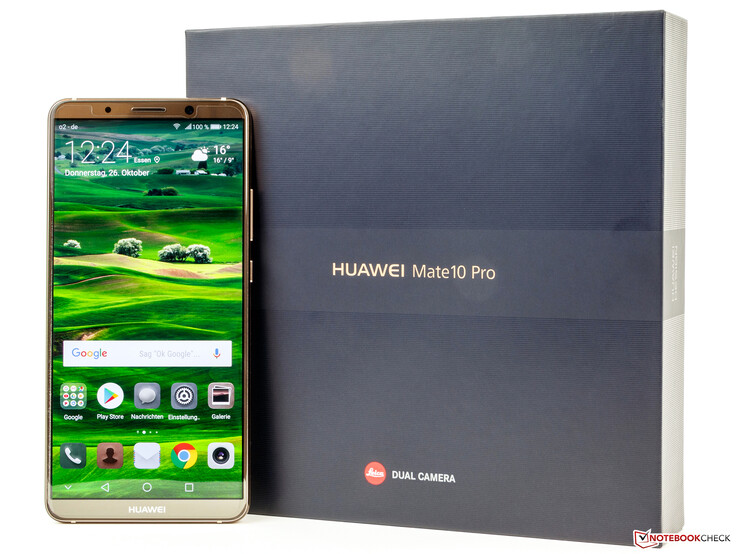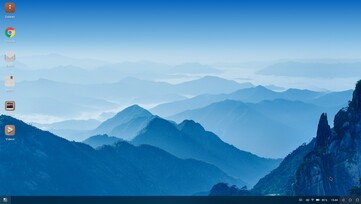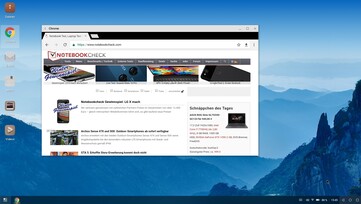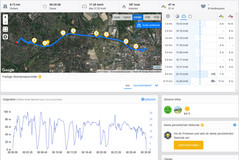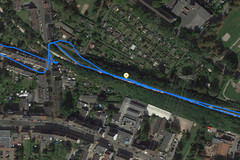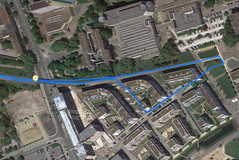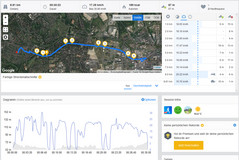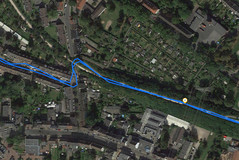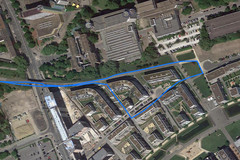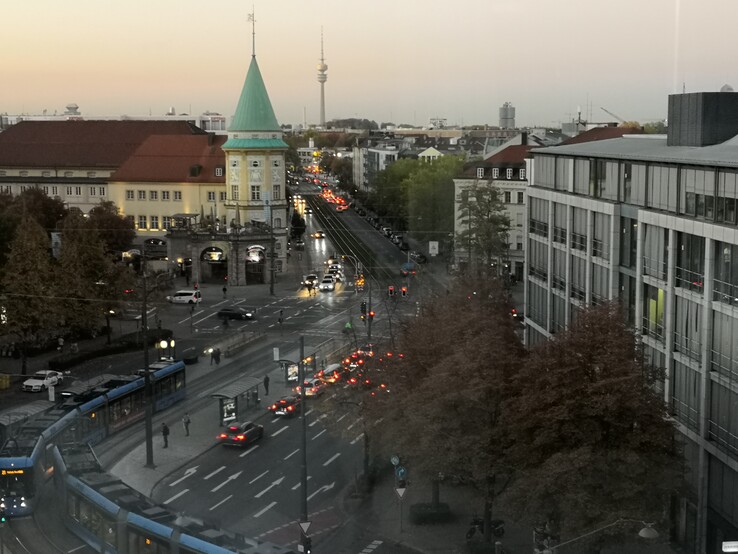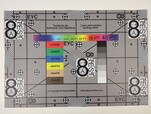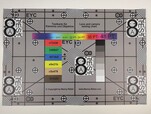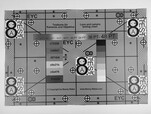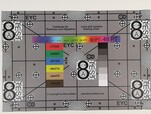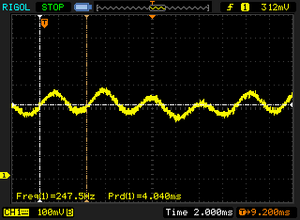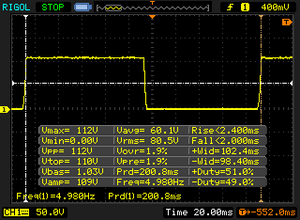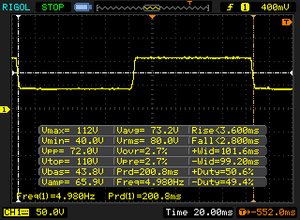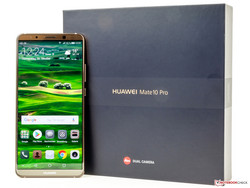华为 Mate 10 Pro 智能手机简短评测
» Notebookcheck多媒体笔记本电脑Top 10排名
» Notebookcheck游戏笔记本电脑Top 10排名
» Notebookcheck低价办公/商务笔记本电脑Top 10排名
» Notebookcheck高端办公/商务笔记本电脑Top 10排名
» Notebookcheck工作站笔记本电脑Top 10排名
» Notebookcheck亚笔记本电脑Top 10排名
» Notebookcheck超级本产品Top 10排名
» Notebookcheck变形本产品Top 10排名
» Notebookcheck平板电脑Top 10排名
» Notebookcheck智能手机Top 10排名
» Notebookcheck评测过最出色的笔记本电脑屏幕
» Notebookcheck售价500欧元以下笔记本电脑Top 10排名
» Notebookcheck售价300欧元以下笔记本电脑Top 10排名
| Networking | |
| iperf3 transmit AX12 | |
| Samsung Galaxy Note 8 | |
| Huawei Mate 10 Pro | |
| Huawei Mate 10 Pro | |
| OnePlus 5 | |
| Sony Xperia XZ Premium | |
| Huawei Mate 9 | |
| iperf3 receive AX12 | |
| Samsung Galaxy Note 8 | |
| Sony Xperia XZ Premium | |
| OnePlus 5 | |
| Huawei Mate 10 Pro | |
| Huawei Mate 10 Pro | |
| Huawei Mate 9 | |
| |||||||||||||||||||||||||
Brightness Distribution: 94 %
Center on Battery: 629 cd/m²
Contrast: ∞:1 (Black: 0 cd/m²)
ΔE ColorChecker Calman: 1.7 | ∀{0.5-29.43 Ø4.78}
ΔE Greyscale Calman: 2.4 | ∀{0.09-98 Ø5}
Gamma: 2.15
CCT: 6337 K
| Huawei Mate 10 Pro OLED, 2160x1080, 6" | Huawei Mate 9 IPS, 1920x1080, 5.9" | Honor 8 Pro IPS, 2560x1440, 5.7" | Samsung Galaxy Note 8 Super AMOLED, 2960x1440, 6.3" | Apple iPhone 8 Plus IPS, 1920x1080, 5.5" | Sony Xperia XZ Premium IPS, 3840x2160, 5.5" | HTC U Ultra SLCD 5, 2560x1440, 5.7" | Lenovo Phab 2 Pro IPS, 2560x1440, 6.4" | |
|---|---|---|---|---|---|---|---|---|
| Screen | -66% | -49% | -24% | 7% | -24% | -122% | -133% | |
| Brightness middle (cd/m²) | 629 | 696 11% | 541 -14% | 530 -16% | 559 -11% | 578 -8% | 470 -25% | 472.4 -25% |
| Brightness (cd/m²) | 636 | 680 7% | 514 -19% | 536 -16% | 538 -15% | 568 -11% | 445 -30% | 479 -25% |
| Brightness Distribution (%) | 94 | 93 -1% | 91 -3% | 93 -1% | 90 -4% | 92 -2% | 88 -6% | 93 -1% |
| Black Level * (cd/m²) | 0.42 | 0.3 | 0.38 | 0.62 | 0.22 | 0.482 | ||
| Colorchecker dE 2000 * | 1.7 | 4.3 -153% | 3.2 -88% | 2.6 -53% | 1.3 24% | 2.8 -65% | 5.5 -224% | 7 -312% |
| Colorchecker dE 2000 max. * | 3.6 | 9.4 -161% | 7.2 -100% | 5.1 -42% | 2.7 25% | 5.1 -42% | 11.9 -231% | 11 -206% |
| Greyscale dE 2000 * | 2.4 | 4.8 -100% | 4 -67% | 2.7 -13% | 1.8 25% | 2.8 -17% | 7.6 -217% | 7.9 -229% |
| Gamma | 2.15 102% | 2.33 94% | 2.27 97% | 2.04 108% | 2.25 98% | 2.15 102% | 2.2 100% | 2.34 94% |
| CCT | 6337 103% | 7255 90% | 7120 91% | 6206 105% | 6797 96% | 6728 97% | 7454 87% | 7826 83% |
| Contrast (:1) | 1657 | 1803 | 1471 | 932 | 2136 | 980 |
* ... smaller is better
Screen Flickering / PWM (Pulse-Width Modulation)
| Screen flickering / PWM detected | 247.5 Hz | ||
The display backlight flickers at 247.5 Hz (worst case, e.g., utilizing PWM) . The frequency of 247.5 Hz is relatively low, so sensitive users will likely notice flickering and experience eyestrain at the stated brightness setting and below. In comparison: 53 % of all tested devices do not use PWM to dim the display. If PWM was detected, an average of 8118 (minimum: 5 - maximum: 343500) Hz was measured. | |||
Display Response Times
| ↔ Response Time Black to White | ||
|---|---|---|
| 4.4 ms ... rise ↗ and fall ↘ combined | ↗ 2.4 ms rise | |
| ↘ 2 ms fall | ||
| The screen shows very fast response rates in our tests and should be very well suited for fast-paced gaming. In comparison, all tested devices range from 0.1 (minimum) to 240 (maximum) ms. » 16 % of all devices are better. This means that the measured response time is better than the average of all tested devices (20.2 ms). | ||
| ↔ Response Time 50% Grey to 80% Grey | ||
| 6.4 ms ... rise ↗ and fall ↘ combined | ↗ 3.6 ms rise | |
| ↘ 2.8 ms fall | ||
| The screen shows very fast response rates in our tests and should be very well suited for fast-paced gaming. In comparison, all tested devices range from 0.165 (minimum) to 636 (maximum) ms. » 18 % of all devices are better. This means that the measured response time is better than the average of all tested devices (31.6 ms). | ||
| Lightmark - 1920x1080 1080p (sort by value) | |
| Huawei Mate 10 Pro | |
| Huawei Mate 9 | |
| Samsung Galaxy Note 8 | |
| HTC U11 | |
| Lenovo Phab 2 Pro | |
| Samsung Galaxy S8 Plus | |
| Basemark ES 3.1 / Metal - offscreen Overall Score (sort by value) | |
| Huawei Mate 10 Pro | |
| Huawei Mate 9 | |
| Samsung Galaxy Note 8 | |
| HTC U11 | |
| Samsung Galaxy S8 Plus | |
| Epic Citadel - Ultra High Quality (sort by value) | |
| Huawei Mate 10 Pro | |
| Huawei Mate 9 | |
| Samsung Galaxy Note 8 | |
| HTC U11 | |
| Lenovo Phab 2 Pro | |
| Samsung Galaxy S8 Plus | |
| JetStream 1.1 - Total Score | |
| Apple iPhone 8 Plus | |
| OnePlus 5 (Chrome 59) | |
| Samsung Galaxy Note 8 (Samsung Browser 6.0) | |
| HTC U11 (Chrome 58) | |
| Huawei Mate 9 (Chrome 54) | |
| Samsung Galaxy S8 Plus (Samsung Browser 5.2) | |
| Honor 8 Pro (Chrome Version 57) | |
| Huawei Mate 10 Pro (Chrome 61) | |
| LG V30 (Chrome 62) | |
| Lenovo Phab 2 Pro (Chrome 54.0.2840.85) | |
| HTC U Ultra (Chrome 56) | |
| Octane V2 - Total Score | |
| Apple iPhone 8 Plus | |
| Samsung Galaxy S8 Plus (Samsung Browser 5.2) | |
| Samsung Galaxy Note 8 (Samsung Browser 6.0) | |
| OnePlus 5 (Chrome 59) | |
| Huawei Mate 9 (Chrome 54) | |
| HTC U11 (Chrome 58) | |
| LG V30 (Chrome 62) | |
| Huawei Mate 10 Pro (Chrome 61) | |
| Honor 8 Pro (Chrome Version 57) | |
| Lenovo Phab 2 Pro (Chrome 54.0.2840.85) | |
| HTC U Ultra (Chrome 56) | |
| Mozilla Kraken 1.1 - Total | |
| HTC U Ultra (Chrome 56) | |
| LG V30 (Chrome 62) | |
| Lenovo Phab 2 Pro (Chrome 54.0.2840.85) | |
| Huawei Mate 10 Pro (Chrome 61) | |
| Honor 8 Pro (Chrome Version 57) | |
| HTC U11 (Chrome 58) | |
| Huawei Mate 9 (Chrome 54) | |
| OnePlus 5 (Chrome 59) | |
| Samsung Galaxy S8 Plus (Samsung Browser 5.2) | |
| Samsung Galaxy Note 8 (Samsung Browser 6.0) | |
| Apple iPhone 8 Plus | |
| WebXPRT 2015 - Overall | |
| Apple iPhone 8 Plus | |
| HTC U11 (Chrome 58) | |
| OnePlus 5 (Chrome 59) | |
| Samsung Galaxy Note 8 (Samsung Browser 6.0) | |
| Huawei Mate 10 Pro (Chrome 61) | |
| Samsung Galaxy S8 Plus (Samsung Browser 5.2) | |
| Huawei Mate 9 (Chrome 54) | |
| Honor 8 Pro (Chrome Version 57) | |
| LG V30 (Chrome 62) | |
| Lenovo Phab 2 Pro | |
* ... smaller is better
| Huawei Mate 10 Pro | Huawei Mate 9 | Samsung Galaxy Note 8 | Honor 8 Pro | Sony Xperia XZ Premium | HTC U11 | OnePlus 5 | |
|---|---|---|---|---|---|---|---|
| AndroBench 3-5 | -44% | -23% | 2% | -37% | -21% | -21% | |
| Sequential Read 256KB (MB/s) | 732 | 594 -19% | 797 9% | 738 1% | 687 -6% | 717 -2% | 748 2% |
| Sequential Write 256KB (MB/s) | 208.7 | 142.9 -32% | 205.9 -1% | 187.1 -10% | 194 -7% | 206.4 -1% | 201.5 -3% |
| Random Read 4KB (MB/s) | 132.3 | 94.7 -28% | 122.5 -7% | 166.4 26% | 74.1 -44% | 91.4 -31% | 141 7% |
| Random Write 4KB (MB/s) | 164.4 | 8.77 -95% | 14.55 -91% | 151.6 -8% | 17.2 -90% | 80 -51% | 19.3 -88% |
| Asphalt 8: Airborne | |||
| Settings | Value | ||
| high | 30 fps | ||
| very low | 30 fps | ||
| Dead Trigger 2 | |||
| Settings | Value | ||
| high | 30 fps | ||
(+) The maximum temperature on the upper side is 36.7 °C / 98 F, compared to the average of 35.2 °C / 95 F, ranging from 21.9 to 247 °C for the class Smartphone.
(+) The bottom heats up to a maximum of 39.8 °C / 104 F, compared to the average of 34 °C / 93 F
(+) In idle usage, the average temperature for the upper side is 26 °C / 79 F, compared to the device average of 32.9 °C / 91 F.
Huawei Mate 10 Pro audio analysis
(+) | speakers can play relatively loud (84.4 dB)
Bass 100 - 315 Hz
(-) | nearly no bass - on average 28.1% lower than median
(±) | linearity of bass is average (10.6% delta to prev. frequency)
Mids 400 - 2000 Hz
(±) | reduced mids - on average 7.4% lower than median
(±) | linearity of mids is average (9.2% delta to prev. frequency)
Highs 2 - 16 kHz
(±) | higher highs - on average 7% higher than median
(+) | highs are linear (3% delta to prev. frequency)
Overall 100 - 16.000 Hz
(±) | linearity of overall sound is average (25.9% difference to median)
Compared to same class
» 65% of all tested devices in this class were better, 6% similar, 29% worse
» The best had a delta of 11%, average was 35%, worst was 134%
Compared to all devices tested
» 79% of all tested devices were better, 4% similar, 17% worse
» The best had a delta of 4%, average was 24%, worst was 134%
Samsung Galaxy Note 8 audio analysis
(+) | speakers can play relatively loud (86.9 dB)
Bass 100 - 315 Hz
(-) | nearly no bass - on average 27.1% lower than median
(±) | linearity of bass is average (11% delta to prev. frequency)
Mids 400 - 2000 Hz
(+) | balanced mids - only 4.4% away from median
(+) | mids are linear (5.3% delta to prev. frequency)
Highs 2 - 16 kHz
(±) | higher highs - on average 7.6% higher than median
(±) | linearity of highs is average (7.2% delta to prev. frequency)
Overall 100 - 16.000 Hz
(±) | linearity of overall sound is average (22.2% difference to median)
Compared to same class
» 46% of all tested devices in this class were better, 7% similar, 47% worse
» The best had a delta of 11%, average was 35%, worst was 134%
Compared to all devices tested
» 64% of all tested devices were better, 6% similar, 30% worse
» The best had a delta of 4%, average was 24%, worst was 134%
Sony Xperia XZ Premium audio analysis
(±) | speaker loudness is average but good (79.7 dB)
Bass 100 - 315 Hz
(-) | nearly no bass - on average 24% lower than median
(-) | bass is not linear (15.3% delta to prev. frequency)
Mids 400 - 2000 Hz
(±) | higher mids - on average 7.3% higher than median
(+) | mids are linear (6.5% delta to prev. frequency)
Highs 2 - 16 kHz
(+) | balanced highs - only 4.9% away from median
(+) | highs are linear (5.5% delta to prev. frequency)
Overall 100 - 16.000 Hz
(±) | linearity of overall sound is average (26% difference to median)
Compared to same class
» 65% of all tested devices in this class were better, 6% similar, 28% worse
» The best had a delta of 11%, average was 35%, worst was 134%
Compared to all devices tested
» 79% of all tested devices were better, 4% similar, 16% worse
» The best had a delta of 4%, average was 24%, worst was 134%
| Off / Standby | |
| Idle | |
| Load |
|
Key:
min: | |
| Huawei Mate 10 Pro 4000 mAh | Huawei Mate 9 4000 mAh | Samsung Galaxy Note 8 3300 mAh | Apple iPhone 8 Plus 2691 mAh | Sony Xperia XZ Premium 3230 mAh | HTC U11 3000 mAh | Samsung Galaxy S8 Plus 3500 mAh | OnePlus 5 3300 mAh | |
|---|---|---|---|---|---|---|---|---|
| Power Consumption | -37% | -1% | -41% | -42% | -24% | 10% | -20% | |
| Idle Minimum * (Watt) | 0.85 | 0.78 8% | 0.73 14% | 0.72 15% | 0.62 27% | 0.73 14% | 0.68 20% | 0.73 14% |
| Idle Average * (Watt) | 1.15 | 2.13 -85% | 1.44 -25% | 2.45 -113% | 2.44 -112% | 1.96 -70% | 1.13 2% | 1.44 -25% |
| Idle Maximum * (Watt) | 1.23 | 2.17 -76% | 1.53 -24% | 2.52 -105% | 2.59 -111% | 1.98 -61% | 1.16 6% | 1.5 -22% |
| Load Average * (Watt) | 4.12 | 6.32 -53% | 4.56 -11% | 3.84 7% | 4.94 -20% | 4.82 -17% | 4.69 -14% | 6.91 -68% |
| Load Maximum * (Watt) | 8.42 | 6.49 23% | 5.09 40% | 9.02 -7% | 7.91 6% | 7.15 15% | 5.24 38% | 8.51 -1% |
* ... smaller is better
| Huawei Mate 10 Pro 4000 mAh | Huawei Mate 9 4000 mAh | Samsung Galaxy Note 8 3300 mAh | Apple iPhone 8 Plus 2691 mAh | Honor 8 Pro 4000 mAh | Sony Xperia XZ Premium 3230 mAh | HTC U11 3000 mAh | OnePlus 5 3300 mAh | |
|---|---|---|---|---|---|---|---|---|
| Battery runtime | -15% | -36% | -17% | -33% | -18% | -39% | -30% | |
| Reader / Idle (h) | 29.1 | 25.6 -12% | 18.9 -35% | 34.8 20% | 23 -21% | 29.2 0% | 20.8 -29% | 25.6 -12% |
| H.264 (h) | 15.5 | 15.8 2% | 11 -29% | 12.2 -21% | 11.3 -27% | 13.4 -14% | 8.3 -46% | 10.4 -33% |
| WiFi v1.3 (h) | 13.6 | 12.6 -7% | 7.9 -42% | 11 -19% | 9.6 -29% | 11.6 -15% | 9.3 -32% | 8.6 -37% |
| Load (h) | 6.6 | 3.7 -44% | 4.1 -38% | 3.5 -47% | 3 -55% | 3.9 -41% | 3.5 -47% | 4.1 -38% |
| PCMark for Android - Work 2.0 battery life | |
| Huawei Mate 9 | |
| Huawei Mate 10 Pro | |
| Samsung Galaxy S8 Plus | |
| Samsung Galaxy Note 8 | |
| HTC U11 | |
Pros
Cons
华为Mate 10是一台高端的智能手机。而且价格也比其他同类竞品要亲民。屏幕拥有这很好屏占比。除配备 LTE Cat. 18 (最高 1.2 GBit/s)和Dual-VoLTE模块,Mate 10 Pro还拥有其他独到的功能。配合上优秀的性能,良好的摄像头,以及4000毫安时的大容量电池。我们预计华为还会进一步提升容量。在另一方面,在快速充电方面,华为做到了极致。速度惊人。
中国智造:小身材,大智慧!
高解析率的音频芯片听起来很棒,但是,华为却去除了耳机插口。只支持USB接口下的有线连接。另一方面,很高兴可以看到中国制造商开始在Mate 10 Pro上运用aptX HD技术。MicroSD卡读卡器的缺失,使得相对较大的128G容量空间没有提升余地。同时,我们也希望可以有无线充电功能的配置方案,这个功能在桌面模式下非常有用。
我们被高质量的显示效果折服。华为的确在过去也使用了很好的面板,但是现在的OLED屏幕更为优秀。特别是在亮度和色彩准确度方面。Mate 10 Pro甚至比三星的竞品跟优秀。
摄像头同样优秀,虽然现在还没能接达到最高水平。混合变焦,低光照拍摄,和摄影水平都不够好。任何一个人都能用该机拍出优秀的照片。此外,GPS定位也非常准确。防护安全级别认证,让我们不必担心坏天气。
总而言之,华为这款智能机,操作系统流畅,易于使用。而且价格也比较亲民,少于800欧元(约合928美元)。
注:本文是基于完整评测的缩减版本,阅读完整的英文评测,请点击这里。
Huawei Mate 10 Pro
- 09/03/2022 v7 (old)
Daniel Schmidt




